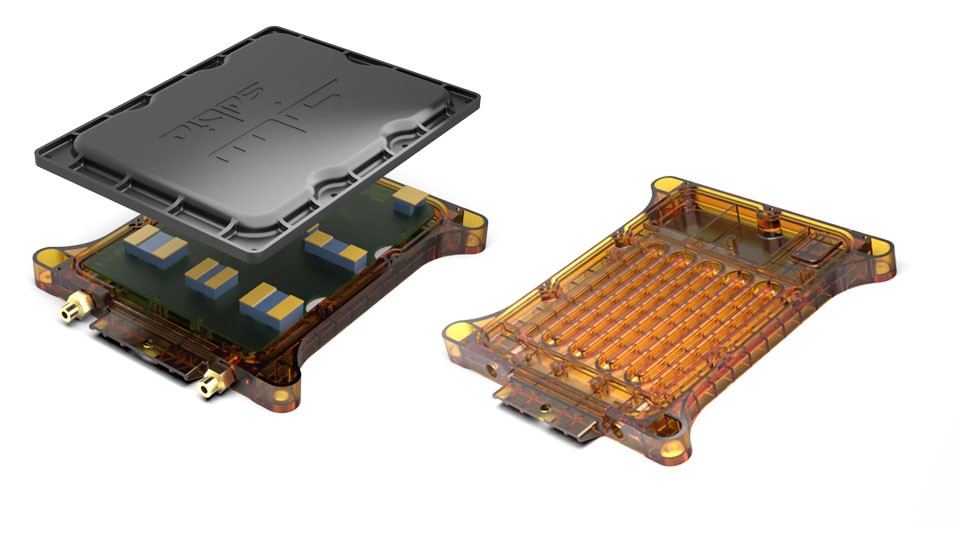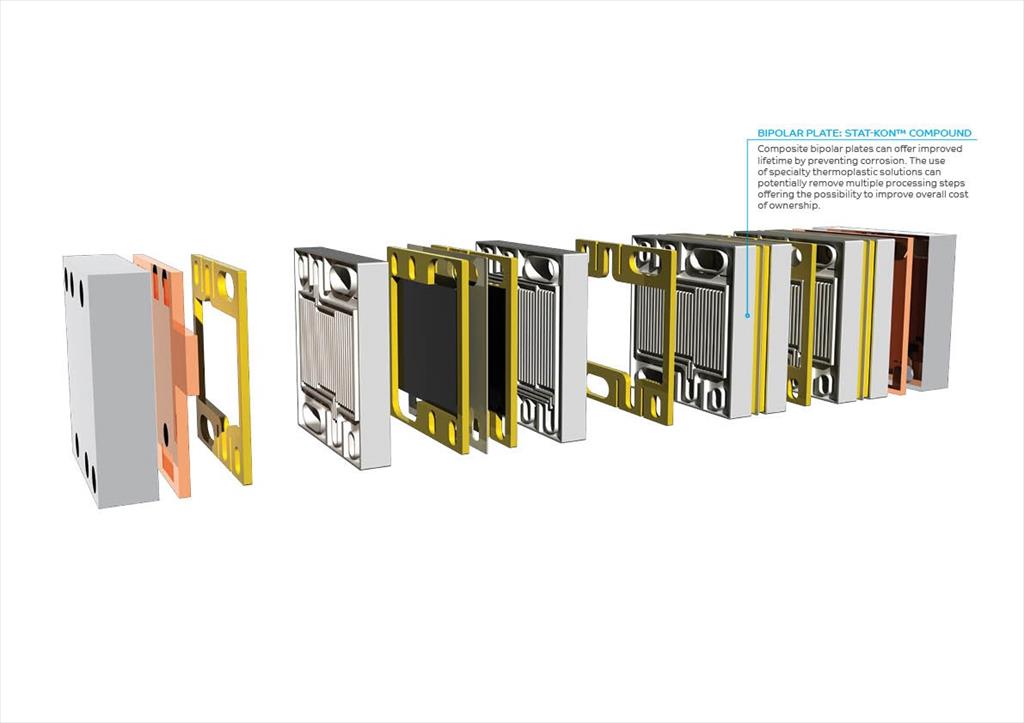SABIC DISPLAYS BREAKTHROUGH SOLUTIONS FOR ENERGY STORAGE AND DISTRIBUTION AT THE BATTERY SHOW EUROPE 2024
- Battery tray demonstrator molded with SABIC polypropylene illustrates benefits of designing with thermoplastics to advance in electric vehicle (EV) battery manufacturing and performance.
- Innovative hybrid DC-DC converter housing concept featuring ULTEM™ resin can reduce costs vs. aluminum.
- High-performance resins made with renewable feedstocks under SABIC’s TRUCIRCLE™ program can help manufacturers lower carbon emissions.
SABIC, a global leader in the chemicals industry, is unveiling its newest thermoplastic solutions for batteries, electric vehicle (EV) technologies and energy storage here at The Battery Show Europe (Booth D10, Hall 8). They include a thermoplastic-metal DC-DC converter housing for EVs and a high-voltage battery pack enclosure. In these and many other applications, SABIC materials’ design freedom and high performance can help customers cut weight, reduce manufacturing complexity, enhance safety and extend service life.
“Accelerating the introduction of the next-generation battery technologies and charging infrastructure is vital for the fast growth and adoption of electrical vehicles”, said Fahad Al-Harthi, global director, Automotive, SABIC “With cutting-edge materials and application expertise embedded in our BLUEHERO™ initiative, we are committed to help OEMs and tiers in the industry scale-up their innovations and meet strict regulatory compliance .”
Multi-material Battery Pack Enclosure
SABIC led a joint effort to develop a cost-effective, flexible and scalable enclosure for high-voltage EV battery packs. The multi-material enclosure features a thermoplastic/organosheet sandwich cover panel, an all-thermoplastic tray and a metal underbody panel. Flame retardant (FR) STAMAX™ long glass fiber polypropylene (LGF-PP) is used for the thermoplastic components. The hybrid system cuts weight by 20 percent vs. an all-aluminum design.
DC-DC Hybrid Converter Demonstrator
To improve upon the aluminum housings of current DC-DC converters, which have design limitations and high manufacturing costs, SABIC developed a plastic-metal hybrid design concept. A demonstrator on display features a lightweight plastic housing made with ULTEM™ resin. The stamped sheet metal insert provides thermal management of the printed circuit board. A primary analysis shows that this hybrid housing is estimated to reduce overall manufacturing costs by 30 percent compared to an all-aluminum version.
In-line Paintable Service Flap
An EV service flap demonstrator is molded from conductive NORYL GTX™ LMX310 resin, which allows in-line painting for color consistency with adjacent body parts with very low moisture uptake. This specialty material meets stringent requirements for dimensional control under a range of temperature and humidity levels.
Fuel Cell Bipolar Plates
A fuel cell demonstrator features bipolar plates made with high-conductivity LNP STAT-KON compound to prevent corrosion and minimize secondary operations. LNP STAT-KON compounds provide high conductivity, processability, chemical resistance and ductility, enabling battery manufacturers to cut weight by up to 70 percent and cost by up to 40 percent vs. metal electrode designs. LNP STAT-KON compound won a Gold Edison Award in 2024. Watch the video here.
EV Battery Components
Several in-production EV battery parts using SABIC’s materials are on display, such as battery module components of the Hyundai IONIQ 6 electric sedan. They are made with SABIC® polypropylene compound H1030, a 30 percent glass fiber-reinforced, non-halogenated flame-retardant material meeting China’s GB/T 41467.3-2015 fire safety regulation for EVs.
Battery Cell Spacers
SABIC’s LNP KONDUIT compound provides up to 50 times the heat transfer of conventional unfilled thermoplastics. In applications such as battery cell spacers, the material can increase electrical efficiency by lowering the operating temperature.
EMI/RFI Shielding
LNP FARADEX™ compounds provide high electromagnetic and radio frequency interference (EMI/RFI) shielding using an electrically conductive network of metal fibers. This approach can avoid secondary operations and potentially deliver system cost reductions in under bonnet electronics.
Charge Amps Dawn EV Charging Station
A commercialized EV application from Charge Amps is on display. In an industry first, SABIC supplies certified renewable LEXAN resin for the housing of Charge Amps’ Dawn EV charging station. Read the news release here.
ISCC Plus Certified Renewable Polymers
SABIC is the first to offer engineering thermoplastics, including LEXAN™, NORYL™ and ULTEM resins, in certified renewable grades – part of the TRUCIRCLE™ portfolio of materials and services.
Visit SABIC during The Battery Show Europe 2024 to learn more about the company’s materials portfolio, and application expertise.

Flame retardant STAMAX™ long glass fiber polypropylene resin is used for the tray and sandwich cover panel of high-voltage battery pack enclosures in EVs. The material’s design freedom can enable a major reduction in part count, which facilitates assembly and optimizes the structural integrity of the components.

A metal-plastic housing for EV DC-DC converters featuring ULTEM™ resin incorporates molded-in cooling channels and fixation points. At production scale, the housing is estimated to cut manufacturing costs by 30%.















 粤公网安备 44190002005717号
粤公网安备 44190002005717号